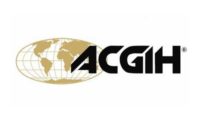The NIOSH Pocket Guide to Chemical Hazards is intended as a source of general industrial hygiene information for workers, employers, and occupational health professionals. The Pocket Guide presents key information and data in abbreviated tabular form for 677 chemicals or substance groupings (e.g., manganese compounds, tellurium compounds, inorganic tin compounds, etc.) that are found in the work environment. The industrial hygiene information found in the Pocket Guide should help users recognize and control occupational chemical hazards. The chemicals or substances contained in this revision include all substances for which the National Institute for Occupational Safety and Health (NIOSH) has recommended exposure limits (RELs) and those with permissible exposure limits (PELs) as found in the Occupational Safety and Health Administration (OSHA) General Industry Air Contaminants Standard (29 CFR 1910.1000).
Background
In 1974, NIOSH (which is responsible for recommending health and safety standards) joined OSHA (whose jurisdictions include promulgation and enforcement activities) in developing a series of occupational health standards for substances with existing PELs. This joint effort was labeled the Standards Completion Program and involved the cooperative efforts of several contractors and personnel from various divisions within NIOSH and OSHA. The Standards Completion Program developed 380 substance-specific draft standards with supporting documentation that contained technical information and recommendations needed for the promulgation of new occupational health regulations. The Pocket Guide was developed to make the technical information in those draft standards more conveniently available to workers, employers, and occupational health professionals. The Pocket Guide is updated periodically to reflect new data regarding the toxicity of various substances and any changes in exposure standards or recommendations.
Data collection and application
The data were collected from a variety of sources, including NIOSH policy documents such as criteria documents and Current Intelligence Bulletins (CIBs), and recognized references in the fields of industrial hygiene, occupational medicine, toxicology, and analytical chemistry.
NIOSH recommendations
Acting under the authority of the Occupational Safety and Health Act of 1970 (29 USC Chapter 15) and the Federal Mine Safety and Health Act of 1977 (30 USC Chapter 22), NIOSH develops and periodically revises recommended exposure limits (RELs) for hazardous substances or conditions in the workplace. NIOSH also recommends appropriate preventive measures to reduce or eliminate the adverse health and safety effects of these hazards. To formulate these recommendations, NIOSH evaluates all known and available medical, biological, engineering, chemical, trade, and other information relevant to the hazard. These recommendations are then published and transmitted to OSHA and the Mine Safety and Health Administration (MSHA) for use in promulgating legal standards.
NIOSH recommendations are published in a variety of documents. Criteria documents recommend workplace exposure limits and appropriate preventive measures to reduce or eliminate adverse health effects and accidental injuries.
Current Intelligence Bulletins (CIBs) are issued to disseminate new scientific information about occupational hazards. A CIB may draw attention to a formerly unrecognized hazard, report new data on a known hazard, or present information on hazard control.
Alerts, Special Hazard Reviews, Occupational Hazard Assessments, and Technical Guidelines support and complement the other standards development activities of the Institute. Their purpose is to assess the safety and health problems associated with a given agent or hazard (e.g., the potential for injury or for carcinogenic, mutagenic, or teratogenic effects) and to recommend appropriate control and surveillance methods. Although these documents are not intended to supplant the more comprehensive criteria documents, they are prepared to assist OSHA and MSHA in the formulation of regulations.
In addition to these publications, NIOSH periodically presents testimony before various Congressional committees and at OSHA and MSHA rulemaking hearings.
Recommendations made through 1992 are available in a single compendium entitled NIOSH Recommendations for Occupational Safety and Health: Compendium of Policy Documents and Statements [DHHS (NIOSH) Publication No. 92-100]. Copies of the Compendium may be ordered from the NIOSH Publications office (800-232-6348).
How to use the Pocket Guide
The Pocket Guide has been designed to provide chemical-specific data to supplement general industrial hygiene knowledge. To maximize the amount of data provided in this limited space, abbreviations and codes have been used extensively. These abbreviations and codes, which have been designed to permit rapid comprehension by the regular user, are discussed for each column in the following subsections.
The chemical name found in the OSHA General Industry Air Contaminants Standard (29 CFR 1910.1000) is listed in the top left portion of each chemical table.



